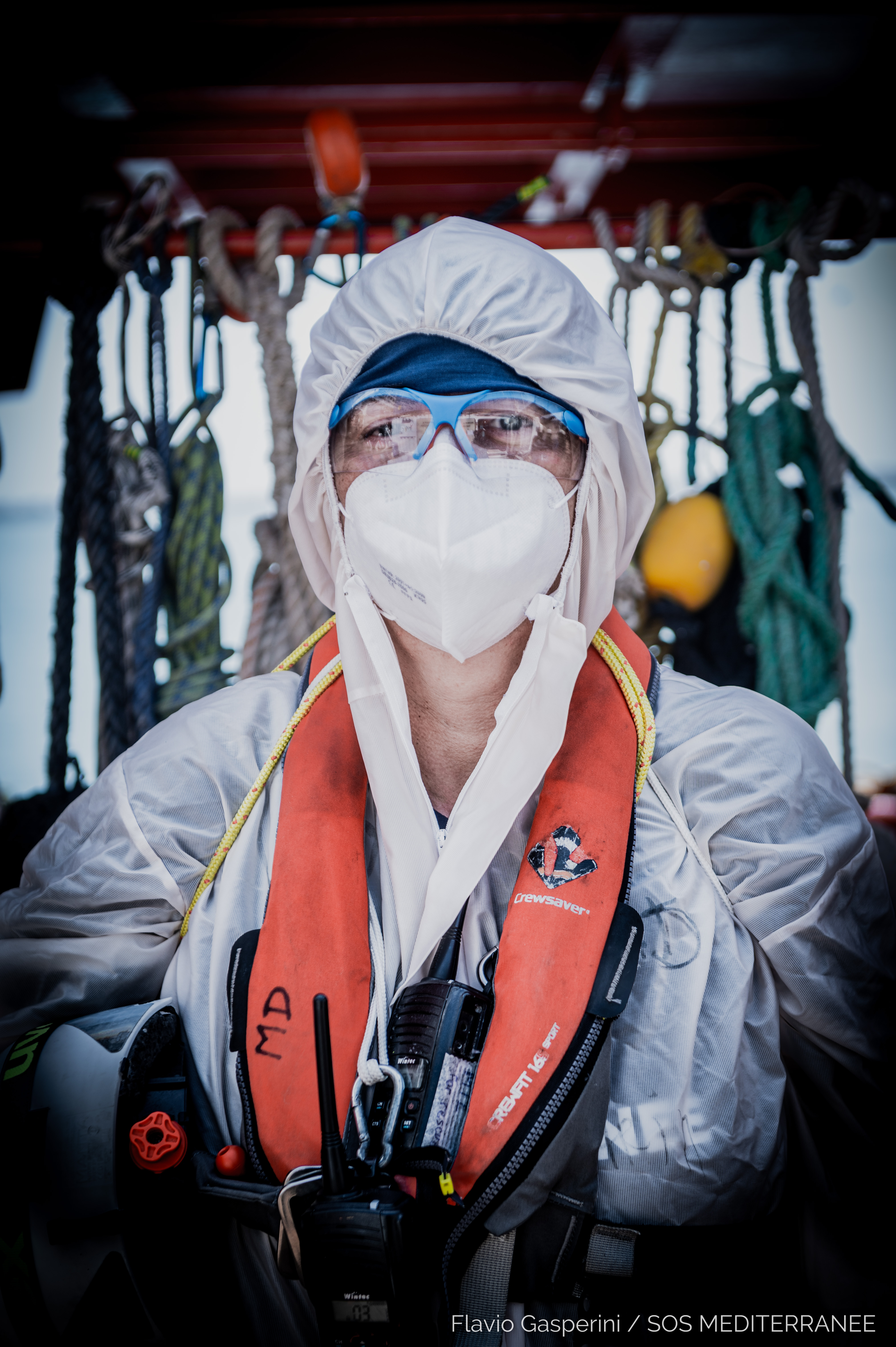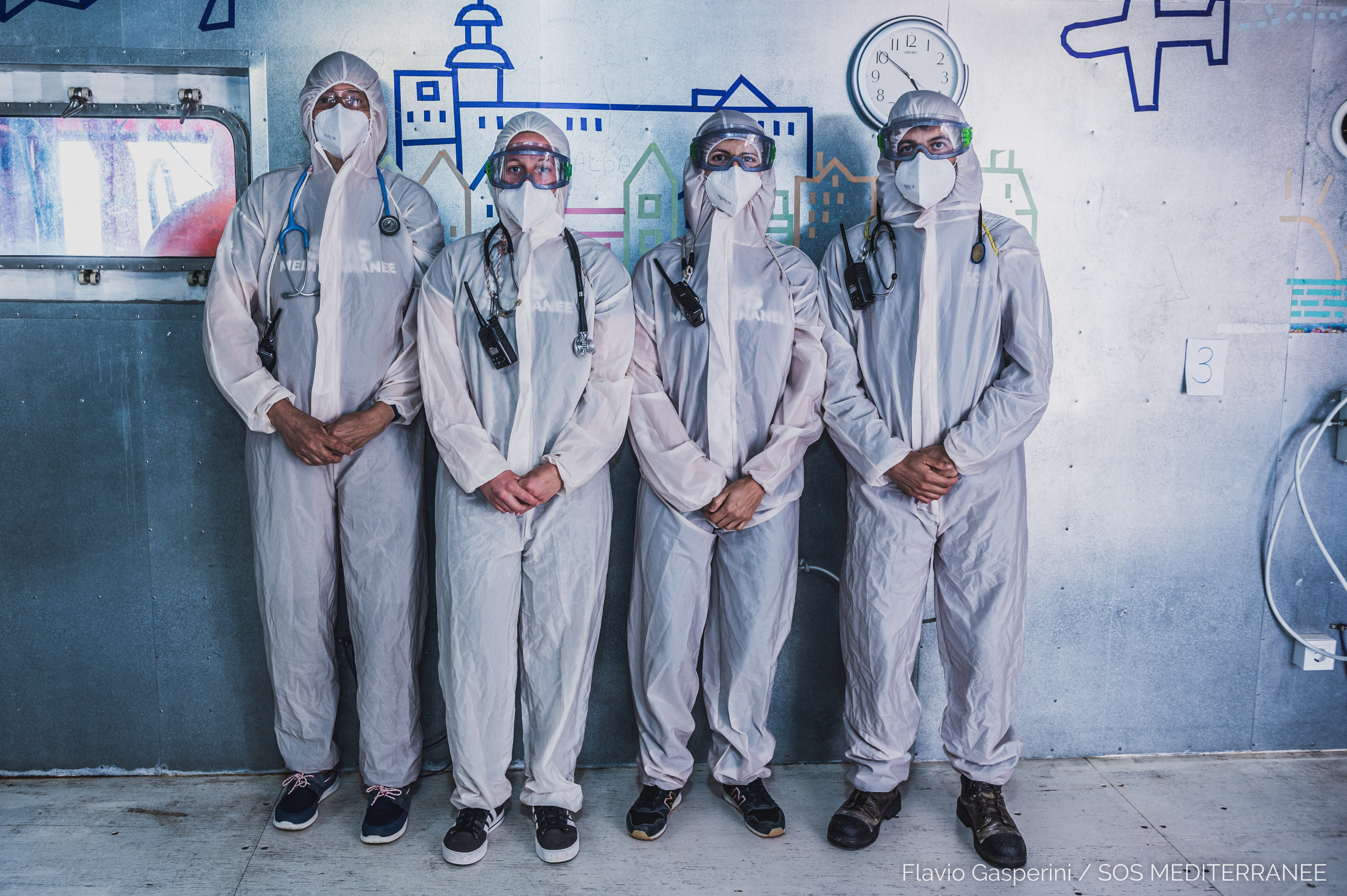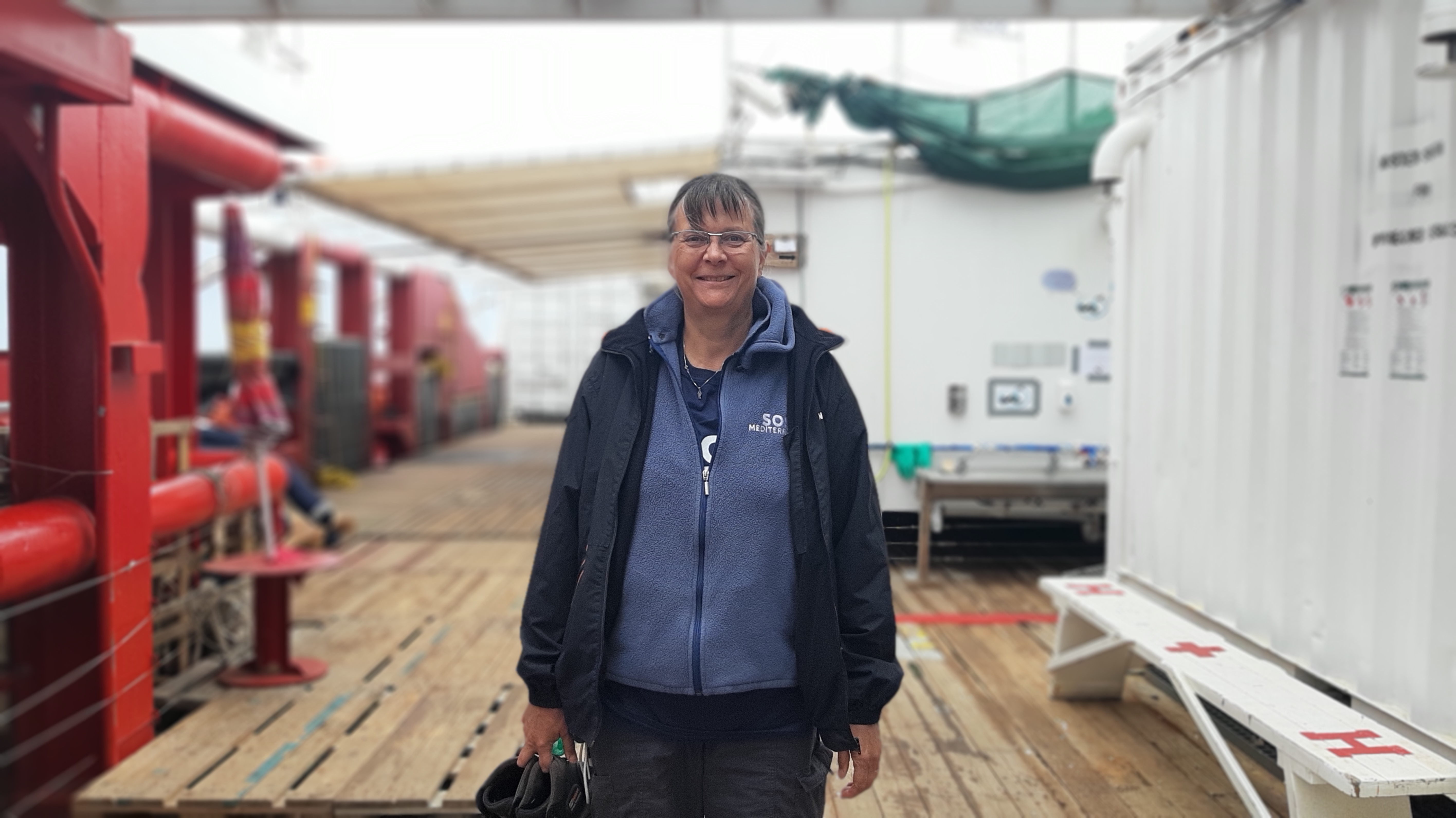Anne: Physician, and on board the Ocean Viking
All that mattered was survival when their path crossed that of the rescue ship Ocean Viking. As soon as they were hoisted onto the deck, the wounded survivors were taken care of by the medical team.
Rescue at sea - a physician's point of view
69 metres long, 15 metres wide, a Norwegian flag. The Ocean Viking took over from the Aquarius in July 2019 to rescue people trying to cross the Mediterranean from Libya. Chartered by the NGO SOS Méditerranée, the Ocean Viking carries around 30 people on each mission: nine crew members, a search and rescue team and medical staff.
Made in cooperation with our partners from esanum.fr
The second mission of the Ocean Viking for the year 2021 took place in March-April. 236 people were rescued. But the crew still has a bitter aftertaste: The ship arrived too late to rescue about 130 others whose boat capsized on the night of 21-22 April. There were no survivors. Their inflatable boat had been reported "in distress". The NGO pointed to the lack of coordination of the rescue effort by the responsible authorities.
Anne is a French physician. She has already carried out several missions on board the Aquarius and then the Ocean Viking. In March-April, Anne was in charge of the medical team. Here is her testimony, collected by the journalist Emmanuelle Chaze who was on board.
For security reasons, Anne's name is not disclosed. The members of SOS Méditerranée are regularly taken to task, and not only on social networks.
esanum: Anne, how do you organise a medical team on board?
Anne: It depends. There is always at least one physician, at least one midwife, and two other people who may be physicians or nurses. On this rotation, there were two nurses, one man and one woman, who have experience in emergency medicine and humanitarian work. The midwife had also already worked in this field. So there is continuity and complementarity, which facilitates teamwork.
esanum: What types of trauma or pathologies are you confronted with during these missions?
Anne: At the time of rescue, the first thing to check is that there is no vital emergency: People who have drowned or suffered severe trauma during their journey. Some may have old bullet wounds. Others have been beaten by the smugglers during embarkation, because they were reluctant to pile onto the inflatable or wooden boats because of bad weather for example. The smugglers beat them to force them to board.
Then the survivors sometimes drift for a long time at sea, in extreme conditions, which leads to an "exposure problem". Depending on the weather, there can be serious cases of hypothermia, dehydration, sunstroke, etc. On large wooden ships, fuel oil tends to accumulate at the bottom and people at the bottom of the hold are severely burned.
Other people are pinned against each other, causing bruises, fractures and chest trauma. Finally, there are many digestive problems. In all these cases, the longer the drift and the worse the sea conditions, the greater the number of medical emergencies.
At the same time, we have to deal with cases that are not medical emergencies but extreme despondency. These people have been so close to death during their drift at sea. The survivors may lose all their energy, collapse on deck, have quite paradoxical reactions, tremble, etc. Their great psychological distress may lead to the death of their loved ones. Their great psychological distress may lead to panic. Later, the waiting and the uncertainty increase their anxiety because we often have difficulty finding a country that agrees to take them in.
On board, the entire crew is trained by the medical team in psychological first aid. We all have to be able to deal with severe emotional distress at all times. On disembarkation, we try to refer survivors whose somatic or psychological condition concerns us to specialists.
The medical team (credit: Flavio Gasperini/SOS Méditerranée)
esanum: Once on board, how are the survivors treated?
Anne: First of all, we have to identify the cases that did not seem urgent at first. For example, we look for possible symptoms of COVID-19, we find out if there are any pregnant women and we try to find out if people have been victims of violence, in every sense of the word.
Then, people come on their own throughout the mission to report problems that appear as they go along. These may be after-effects of their journey, such as injuries or trauma. We treat a lot of respiratory illnesses, skin problems - especially scabies, but also allergies and insect bites - and diffuse pain. Seasickness is very common. Other more serious illnesses can occur on the boat, such as pregnancy-related complications or pneumonia.
esanum: You mention pregnancies. Is this a specific problem?
Anne: These people have frequently been victims of sexual violence, whether in their country of origin, on their journey or in Libya. Unwanted pregnancies are not uncommon. We can offer normal pregnancy monitoring because we have an ultrasound machine and all the necessary medication on board. Sometimes there are deliveries on board, with an increased risk of infection or premature delivery. On the previous mission in January-February, two women in late pregnancy with a high risk of infection had to be evacuated. This is why the presence of a midwife in the team is essential.
In the case of early pregnancies, dialogue with the women is crucial to determine whether the pregnancy is the result of a rape, whether it is desired or not, etc. They are offered pregnancy tests and are given the opportunity to discuss their situation with the physician. Pregnancy tests and ultrasound scans are offered and we discuss with them what they want to do next. Depending on how far along the pregnancy is, if it is unwanted, we can offer them an abortion under adequate health conditions; this avoids them having to do it later in an unsafe way.
esanum: How do you deal with the consequences of sexual violence?
Anne: The people who arrive on the boat have been victims of all kinds of abuse, both men and women. For men, sexual violence is extremely taboo. Very rarely do they explain to us what happened to them and in this case we can accompany them. For women, dialogue is a little easier, even if they also need to feel confident to talk about it. They present a symptom such as a burn or pain and it is at the time of the examination that the physician will suspect an ulterior motive and ask the right questions.
24 hours after the rescue, the midwife explains to the survivors - separately for men and women - that we know that sexual violence often occurs on the way or in Libya. She tells them that we have seen a lot of it, that we are there and that we are ready to listen and to provide treatment. This often allows them to muster up the courage to tell us what happened to them.
esanum: Does the pandemic have an impact on these rescue missions at sea?
Anne: At the time of the rescue, we check the temperature of all those who come on board. Afterwards, this check is carried out daily and all the survivors wear a mask which is renewed every day. Those with symptoms are referred directly to the medical module for examination. In case of a positive test, we look at who was nearby to do contact tracing and test more widely. Positive cases are placed in isolation.
Our staff are qualified to provide hospital care and we have specific equipment and medication in case people on board are infected. However, we do not have a respirator. If there is a serious case, we have to evacuate it.
This pandemic is changing our way of working considerably, and not only on a medical level. All the crew are wearing protective gear at all times, even during rescues. It's a burden because all our movements on the boat and our interactions with the survivors are disrupted.
You can't move freely from one area to another. There are two separate areas on the boat, the survivors' area and our living area. Every time we move from one area to the other, we go through a decontamination zone. In addition, all our contacts with the survivors are made with barrier equipment: full-body suits with integrated hoods, masks and goggles, closed shoes. Relations with them are not as spontaneous and natural as they were before the pandemic. We have to invent ways to show them that we are present and available, so that they feel understood and heard. Our gestures must speak.
Moreover, the pandemic has slowed down the pace of missions. We are obliged to do a quarantine ourselves before boarding. We want to avoid bringing the disease on board at all costs. The whole crew is tested at the beginning, in the middle and at the end of quarantine.
Once the mission is over, according to Italian and maritime legislation, we have a new quarantine to comply with before we can get off the boat. This means that the intervals between missions increase, so that Ocean Viking is less present in the area.
The pandemic is obviously a lot of pressure, but we can't stop our missions. How much time can you give to a life, to saving a life? You can't measure that.

Anne (credit: Flavio Gasperini/SOS Méditerranée)
Anne (credit: Emmanuelle Chaze)
Interview by Emmanuelle Chaze

